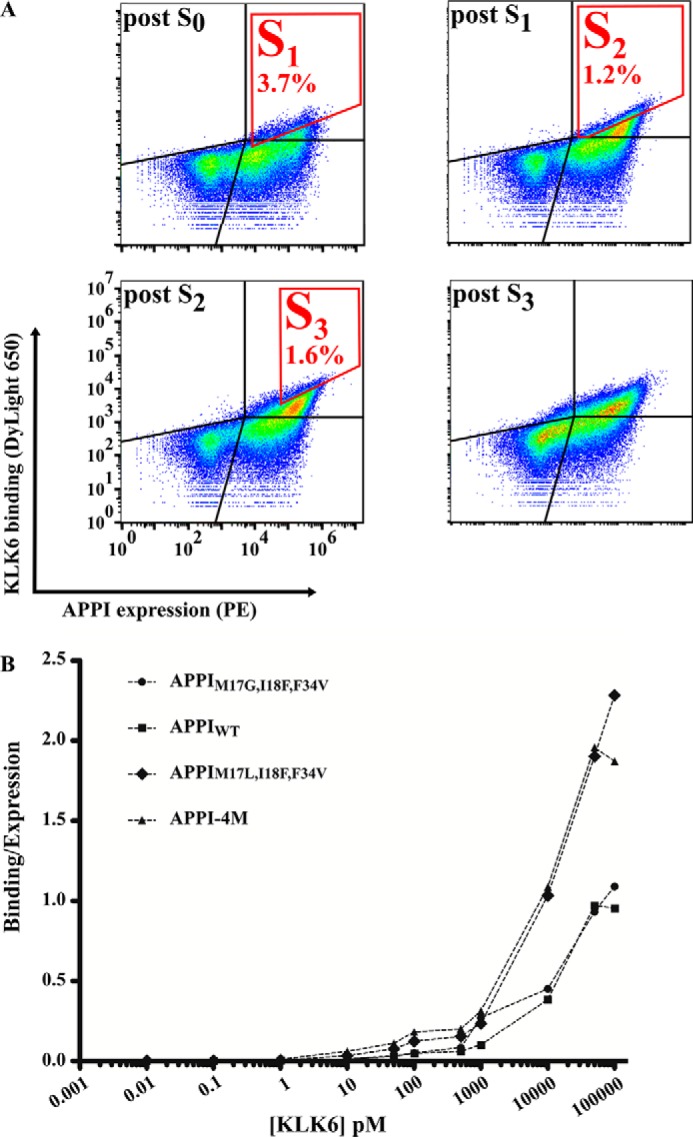Figure 2.

Affinity maturation of the APPI library. A, to enrich the APPI library for high-affinity KLK6 binders, four sequential rounds of FACS sorting were conducted (S1–S3 marked in red). The results of the analysis after each sorting round are presented. S0 represents an initial sorting round intended only for selecting a cell population with high APPI expression, regardless of KLK6 binding. In S1, 500 pm DyLight-650–labeled KLK6 was used to select cells with a high APPI expression and a high KLK6 binding, which comprised 3.7% of the entire cell population. In S2, 50 pm DyLight-650–labeled KLK6 was used to select cells with a high APPI expression and a high KLK6 binding (gated in red), which comprised 1.2% of the entire cell population. In S3, 50 pm DyLight-650–labeled KLK6 was used to select cells with a high APPI expression and a high KLK6 binding, which comprised 1.6% of the entire cell population. B, FACS binding titration curve of KLK6 to yeast cells expressing APPIWT or its three variants. A leftward shift in the curve indicates a higher affinity. The binding signal of KLK6 is normalized to the expression signal of the APPIs.
